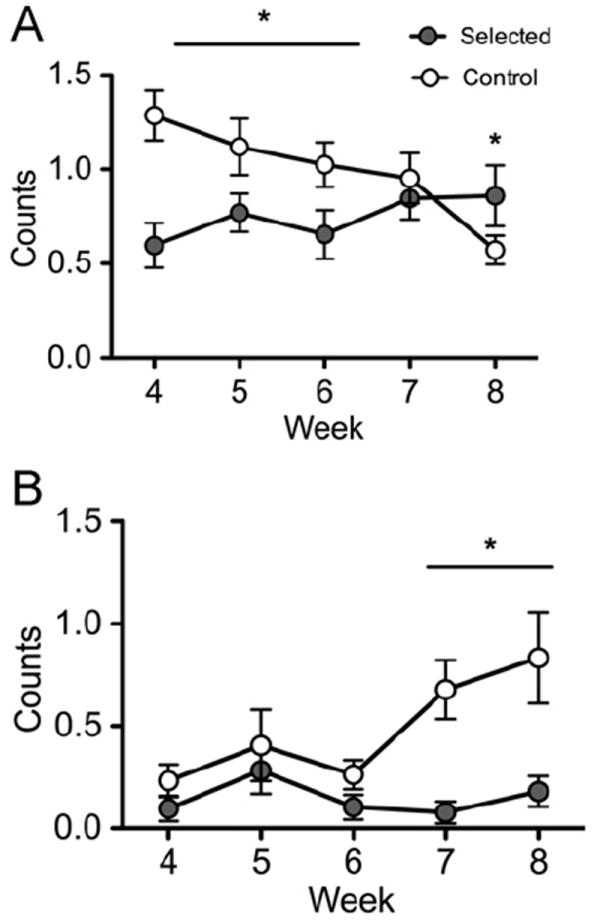Fig. 3.

Longitudinal behavioral patterns at 15:00. Selection influenced the longitudinal pattern of grooming (A) and inactive (B) behaviors. Initially, control animals exhibited more grooming than selected animals; however, by the end of the study selected animals exhibited higher levels of grooming than controls, due to a decrease in grooming in controls, and increased grooming in selected animals. During the first three observation weeks, all animals exhibited very low levels of activity. Control animals increased the expression of inactive behavior, exhibiting significantly higher levels of inactivity than selected animals in the final 2 weeks of the experiment.
